Plants that go crazy in Aquaponics
We all have our favorites. Plants that defy normal growth and even gravity and just take off like a rocket in an aquaponics system. They crowd out other plants and just keep refusing to stop growing. They either take off up into the heavens or spill over the sides and tumble onto the ground and trip you over as you walk past.
This is by no means an authoritative post on the subject. It may even be totally wrong in your experience because of your different climate zone. But the following list of plants are the sort of plants that we’ve experienced ballistic growth in our system and sometimes wish we never planted them.
[sws_green_box box_size=”650″]
Watercress
Watercress is a perennial leaf vegetable plant well suited for aquaponics.
We planted a small seedling of watercress that just multiplied out of all proportion and smothered the lettuce and climbed up over the tomato and kept going over the sides of the growbed and then decided to land and smother the timber hatch to the fish tank below!
Its not a problem to get rid of and breaks apart easily and tastes great in a salad – in small doses that is. How much watercress do you need?
Murray Hallam tells me he installed a very large aquaponics system for a New Zealander who wanted to grow watercress for his countrymen – the Maoris who are very supposedly big consumers of this plant. Well, his client had chosen the right plant to grow in aquaponics as a small piece of watercress will very divide and grow rapidly so be warned.
We ended up ripping most of the watercress right out of our system, probably by a factor of 95% as it is most rampant and feeding the majority of it to our chickens. Keep an eye on it as it has a tendency to grow very quickly in a subtropical environment. [/sws_green_box]
[sws_blue_box box_size=”650″]
Ginger
Galangal is related to the ginger plant favoured in Asian dishes for its peppery spicy flavour. It is a perennial herb, between one and two metres in height, depending on variety. The leaves are 25-35 cm long, rather narrow blades. Its not fast growing but the plant grows from rhizomes that are extremely dense. We planted a cutting in the corner of the growbed and left it alone for twelve months.
It grew fine. Slowly at first and then began to subdivide and send off new shoots packing the corner of the grow-bed into a dense clump.
The foliage began to smother other plants. We decided to lift the plant out of the 300mm grow bed and realized that the whole thing had grown into a heavy square block of matted roots. So dense in fact that any hydroton, the little red clay beads that the plant grows in, were squeezed away from the root system.
An amazing root system.
Like a square block the plant was lifted out of the grow-bed. Easy for replanting which is exactly what we did – in the vegetable garden bed where it is now growing fine but not as rampant.
[/sws_blue_box]
[sws_green_box box_size=”650″]
Taro
Taro is a starchy root vegetable plant that is also semi-aquatic and found in Asia. The tubers send out thick stalks and heart-shaped leaves. This Taro shouldn’t be confused with the Giant Taro that commonly grows to 10 foot and beyond.
Commonly grown in rice paddy’s it’s an unusual plant and not commonly grown in aquaponics. The version we came across was grown in Murray Hallam’s exotic greenhouse and was a display monster that grew to an amazing size.
This is a good example of the power of fish nutrients to maximise growth in a sub tropical aquaponics system.
[/sws_green_box]
[sws_yellow_box box_size=”650″]
Mint
A couple of years ago when we were filming Aquaponics Made Easy with Murray Hallam he said to people that you should never plant mint in an aquaponics system because its invasive and gets into everything. Murray got criticized by some people who had never grown the plant as over reacting.
The point was made that the dangers of growing mint in an aquaponics system was bordering on becoming an “urban legend” that had no basis in fact.
Critics said that it would grow fine outside a subtropical climate. You can see it growing strongly in a warm tropical climate zone in Malaysia and how quickly the tendrils will take over the system if you don’t act – and act fast.
But what about the cooler climate like say the United Kingdom? How would mint grow there? Well take a look at the photos of the rampant mint growing in the UK.
Suffice to say, we don’t grow mint in our system. Thats not to say you shouldn’t try to grow it in yours. Give it a go but be prepared to do a lot of digging later and removing of plant roots later!
[/sws_yellow_box]
Auto Siphons
We’ve had terrific growth with nasturtiums and cucumbers that grew a long trailing line of fruit along the roof guttering of our house and beyond!. Aquaponics makes it easy for plants to grow to the best of their potential.
New research into various sorts of fruit trees are being trialed to test how well new plants, even flowers will grow in aquaponics.
Murray Hallam’s trials with papaya are a great example of wonderful growth. Tomatoes are another example of a plant that can grow rampant in aquaponics and require a trellis system for adequate support.
The best tip to avoid problems with any of these plants is to keep them well enough away from your auto siphon because the invasive nature of the plant’s root system will become apparent weeks later involving substantial maintenance if planted too closely.

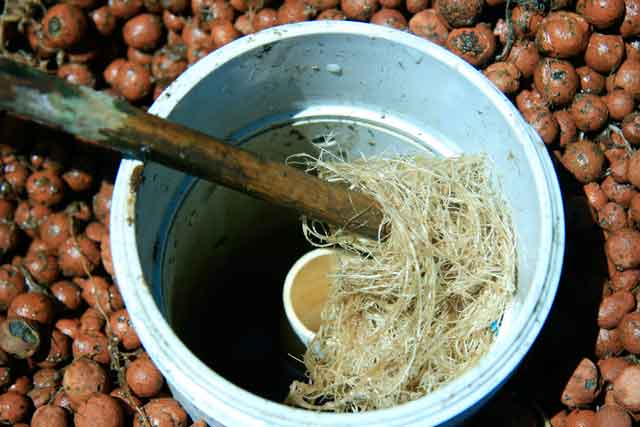





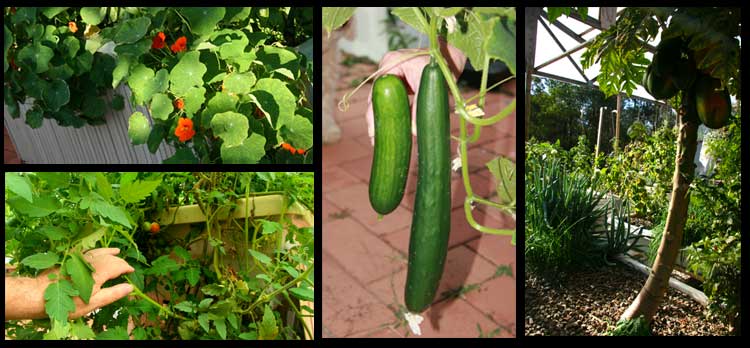
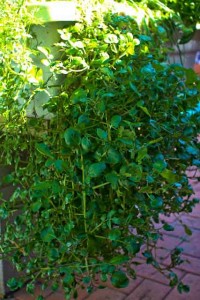
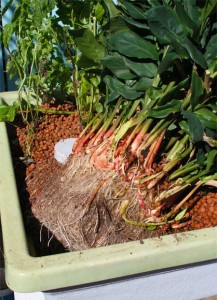
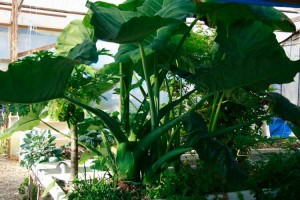

Wanted your DVD please
Hi I live on Maui in Hawaii, please send info. On how to purchase your DVD, FYI do not have pay pal…can send money order. Thanks my address is po box 1474 Wailuku Hi 96793 c/o Floyd. A. Spencer